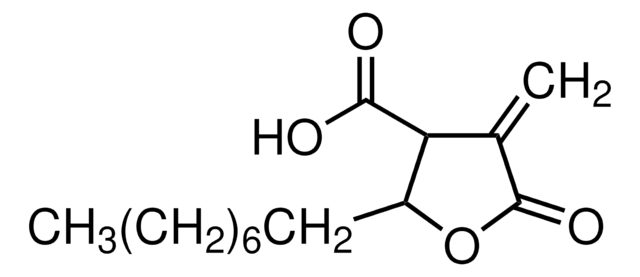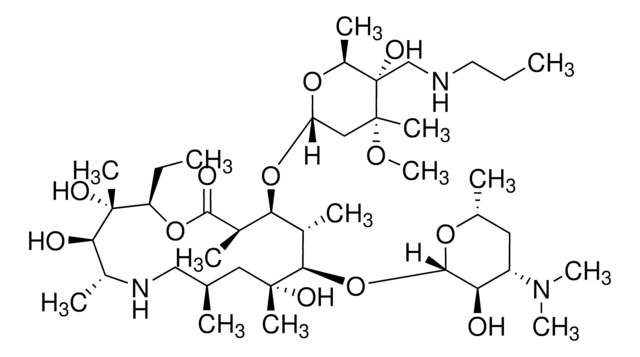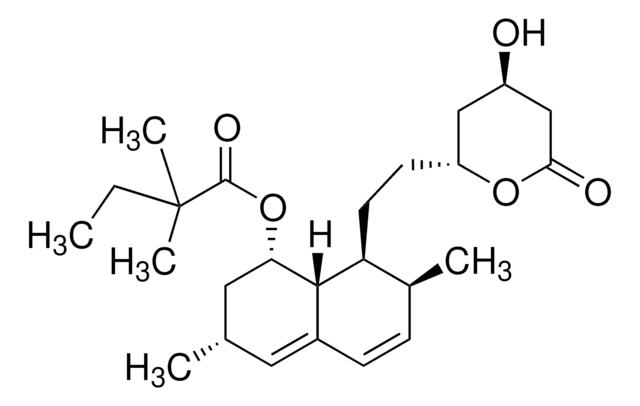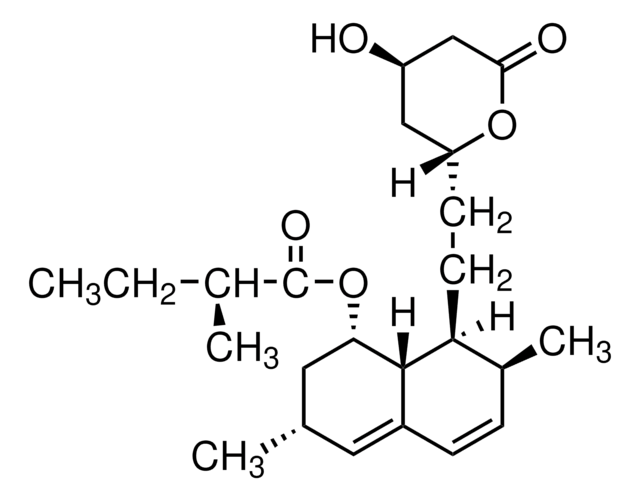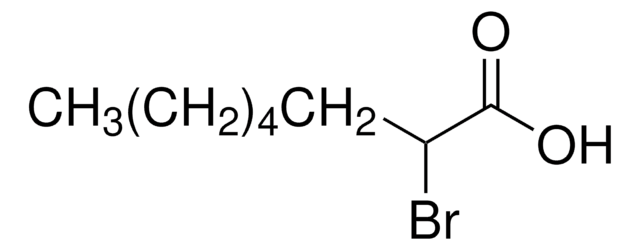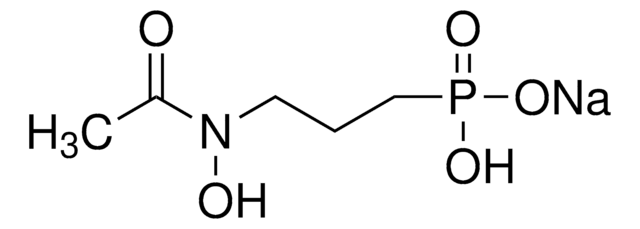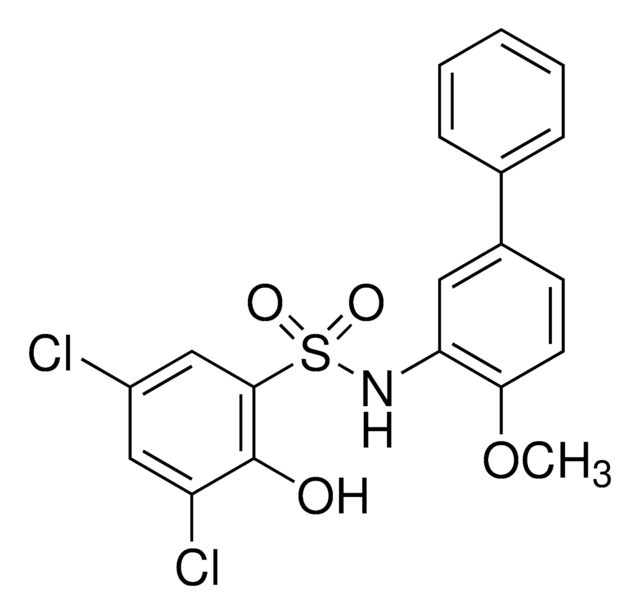C2389
Cerulenin
from Cephalosporium caerulens, ≥98% (HPLC), powder, de novo phospholipid synthesis inhibitor
Synonym(s):
Helicocerin, (2R,3S,E,E)-2,3-Epoxy-4-oxo-7,10-dodecadienamide
About This Item
Recommended Products
Product Name
Cerulenin, ≥98% (HPLC), from Cephalosporium caerulens
biological source
Cephalosporium caerulens
Quality Level
Assay
≥98% (HPLC)
form
powder
mp
93 °C
solubility
acetone: 19.60-20.40 mg/mL, clear to slightly hazy, colorless to yellow
antibiotic activity spectrum
fungi
Mode of action
enzyme | inhibits
storage temp.
−20°C
SMILES string
C/C=C/C/C=C/CCC([C@@H]1[C@H](C(N)=O)O1)=O
InChI
1S/C13H18O3/c1-3-4-5-6-7-8-9-11(15)13-12(16-13)10(2)14/h3-4,6-7,12-13H,5,8-9H2,1-2H3/b4-3+,7-6+/t12-,13+/m0/s1
InChI key
PTNNGEBMCNMENY-JIVMHGEESA-N
Gene Information
human ... FASN(2194)
Looking for similar products? Visit Product Comparison Guide
General description
Application
- as a fatty acid synthase inhibitor to study its effects on aldosterone-induced trained immunity
- as a blocker of fatty acid synthase to study its effects on the replication of severe acute respiratory syndrome coronavirus 2 (SARS-CoV2)
- as a supplement in yeast extract–peptone–dextrose/glycerol (YPD/G) agar plates for the isolation of cerulenin-resistant yeast strains
Signal Word
Warning
Hazard Statements
Hazard Classifications
Acute Tox. 4 Oral
Storage Class Code
11 - Combustible Solids
WGK
WGK 3
Flash Point(F)
Not applicable
Flash Point(C)
Not applicable
Personal Protective Equipment
Choose from one of the most recent versions:
Already Own This Product?
Find documentation for the products that you have recently purchased in the Document Library.
Customers Also Viewed
Articles
The amount of cholesterol that is synthesized in the liver is tightly regulated by dietary cholesterol levels. LDL receptors regulate the cellular transport of lipid rich low density lipoprotein (LDL) particles.
Information on fatty acid synthesis and metabolism in cancer cells. Learn how proliferatively active cells require fatty acids for functions such as membrane generation, protein modification, and bioenergetic requirements. These fatty acids are derived either from dietary sources or are synthesized by the cell.
Related Content
Discover Bioactive Small Molecules for Lipid Signaling Research
Our team of scientists has experience in all areas of research including Life Science, Material Science, Chemical Synthesis, Chromatography, Analytical and many others.
Contact Technical Service
